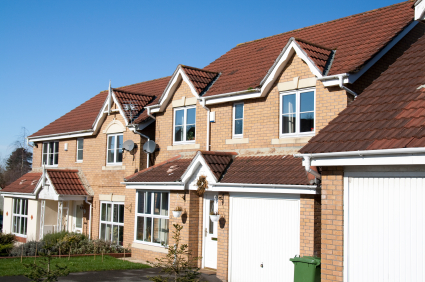Property in the North set to Boom in 2018!
 In 2018 the overall housing marking is expected to remain stable according to forecasts from Halifax and the Royal Institute of Chartered Surveyors (RICS). They also released that they forecast the number of people purchasing homes to drop slightly.
In 2018 the overall housing marking is expected to remain stable according to forecasts from Halifax and the Royal Institute of Chartered Surveyors (RICS). They also released that they forecast the number of people purchasing homes to drop slightly.
RICS forecast suggests that UK property price growth is expected to come to an end over the next year as the amount of transactions decrease slightly.
However, overall figures in the report are likely to remain neutral due to the price growth in certain regions such as Northern Ireland, Wales, Scotland and the North West which is expected to offset the predicted declines in the South East and London.
It is currently suggested that the number of homes sold in the UK in 2017 is approximately 1.2million. In January the final figures are due to be released by HMRC and if the figures are as suggested then it means the market in 2017 was marginally lower than in 2016 when 1.23million homes were sold. The RICS report predicts that in 2018 it is unlikely that the market will proceed 1.2million sales.
The drop in residential property sales is due to the combination of less new build properties being offered and the declining number of pre-existing houses being put on the market together with interest rate rises, tax changes and stretched buyer affordability.
Tarrant Parsons, member of the RICS Economist team, commented on the forecast, “The indications are that momentum across the housing market will be lacking as 2018 gets underway. With several of the forces currently weighing on activity set to persist over the near term, it’s difficult to envisage a material step-up in impetus during the next twelve months.
“A real lack of stock coming onto the market remains one of the biggest challenges, while affordability constraints are increasingly curbing demand in some parts. Given these dynamics, price growth may fade to produce a virtually flat outturn for 2018.”
He continued, “That said, despite the recent interest rate hike, mortgage rates are set to remain very favourable, with the prospect of further rises seemingly minimal over the coming year. Alongside this, government schemes such as Help to Buy should continue to provide some support to sales activity.
A similar message comes from one of the UK’s biggest lenders, the Halifax, who also issued their house price forecast for 2018 this week. They also suggest that house prices will remain broadly stable in 2018, with house price growth likely to be weakest in London and the South East, although their prediction is slightly more positive with a forecasted average annual rise in property values of up to 3% by the end of 2018.
The Halifax report suggests that the reason for the muted outlook in 2018 is due to the continuing effects of this year’s squeeze on spending power as inflation has outstripped wage growth and the uncertainty regarding the prospects for the UK economy next year. However, the report also states that, “There is little reason to expect any fundamental shift in the key housing market drivers in the immediate future”.
Russell Gallery, Halifax Bank’s Managing Director said, ““In contrast to the trend seen for much of the past decade, latest data indicates that property price momentum was strongest in northern England but weaker in the South East and London. House prices in relation to average earnings are still very high in London; at 8.8 times annual average earnings they are close to the historical high of 9.
“Additionally, mortgage affordability in London is worse than its long run average, the only region in the UK where this is so. These affordability issues suggest that price growth will continue to remain low. Outside London, there are few signs of significant stresses and imbalances at present, limiting the risk of a sharp slowdown elsewhere.
“House Prices in general are likely to be supported, seeing modest growth in 2018, through the combination of a shortage of properties for sale, continued low levels of housebuilding, low unemployment levels and finally good levels of affordability due to the low interest rate environment. Despite the recent rate rise we do not expect this to have an adverse impact on transactions. A further rate rise is not seen as imminent and we may not see one until the latter part of 2018, if at all.”
This all means that the South East and London are predicted to continue to be a buyers’ market throughout 2018. However, outside of London and its commuter belt, a few regions will continue to experience ‘mini booms’.
Kirsty Rogers, Pali Ltd